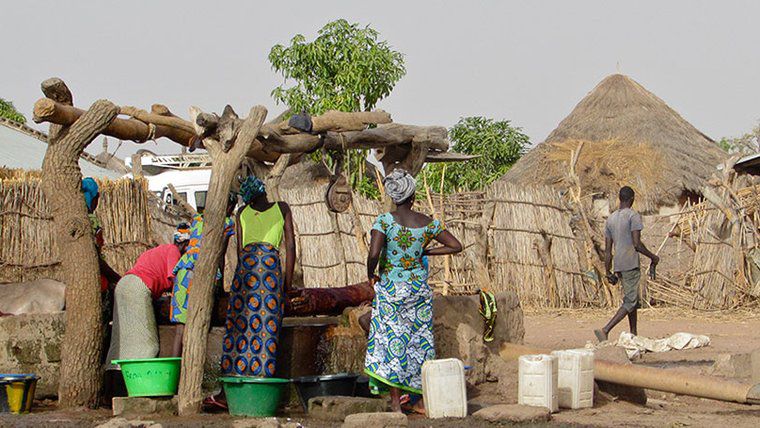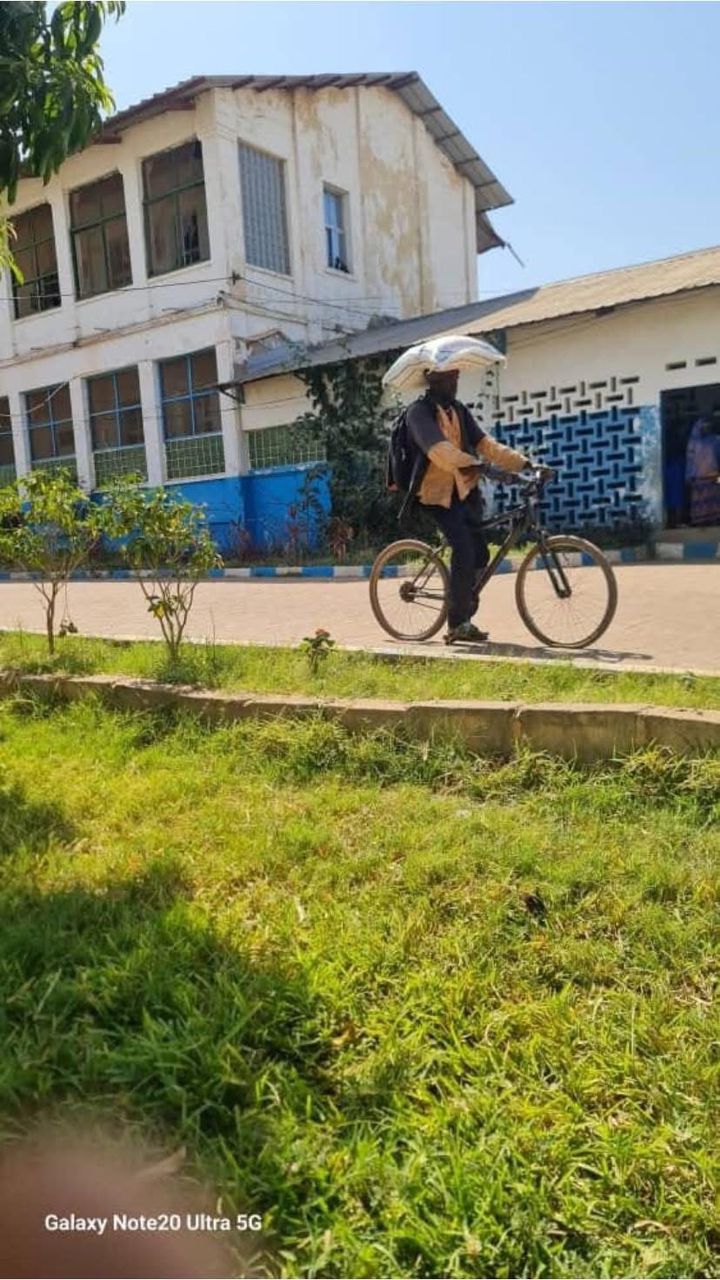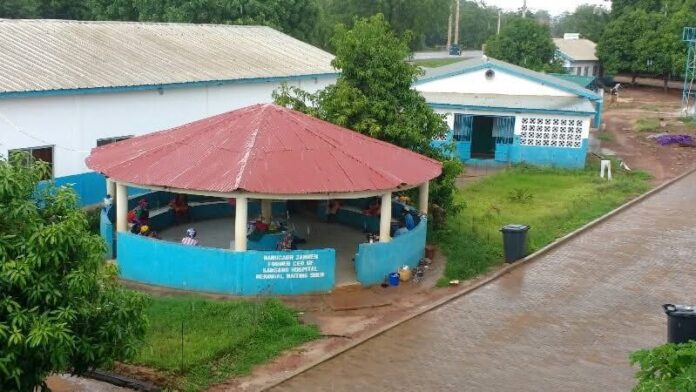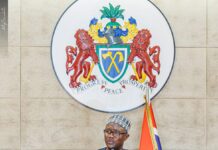By Ebrima Mbaye
In the Central River Region (CRR) and Upper River Region (URR) of The Gambia, residents face significant challenges in accessing healthcare. Thousands of individuals face the harsh reality of limited medical facilities and resources daily.
The closest clinic is miles away, and reaching it is difficult for many. Roads can be impassable, particularly during the rainy season, and transportation options are scarce. For a pregnant woman in labor or a critically ill child, the journey to seek medical care can be a life-or-death struggle.
Health experts warned that rural Gambia’s healthcare situation is dire. The availability of medical services is not merely a matter of convenience but an essential need.
Despite initiatives by the government and international partners, the healthcare system remains underfunded and under-resourced, presenting substantial challenges for rural Gambians.
The Numbers Behind the Crisis
In the CRR, which has a population exceeding 226,000, there are only seven major health centers, 12 minor health centers, and 396 village health posts. The URR, with approximately 182,000 residents, faces similar circumstances. However, these facilities’ ability to meet the needs of the dispersed and remote population is limited. The shortage of equipment, medicine, and qualified staff further complicates the situation.
While these health centers are intended to provide necessary medical care, they often fall short of meeting expectations. Rural areas, hindered by inadequate infrastructure and a lack of trained healthcare workers, struggle to keep pace with urban centers such as Banjul and the Western region, which receive the bulk of medical resources and attention.
A Daily Struggle for Health Care
Access to healthcare in rural regions of The Gambia, such as the Central River Region (CRR) and Upper River Region (URR), presents significant challenges for the residents. The journey to the nearest clinic or hospital can be arduous and costly, particularly for those in critical need, such as women in labor. Reliance on basic transportation means, like donkey carts, and poor road conditions, especially during the rainy season, exacerbate the situation.
Healthcare centers in these areas often face resource constraints and lack essential medicines and equipment. Facilities like Bansang Hospital in CRR and Basse Hospital in URR are overwhelmed and struggling to meet the rural population’s healthcare demands. A shortage of qualified healthcare professionals further complicates this situation.
“During the rainy season, many villages are completely cut off,” says Modou Jobe, a nursing student from CRR. “You are left with no choice but to wait, hoping for the rain to stop or for someone to help.”
Even when patients arrive at healthcare centers, they often encounter limited resources. Many clinics lack basic medicines and equipment. Regional hospitals, such as Bansang in the Central River Region (CRR) and Basse in the Upper River Region (URR), operate at full capacity and struggle to provide adequate care despite being the only healthcare option available for the rural population.
A nurse stationed in URR shared, “The workload is overwhelming, and the resources are stretched thin. We do our best but cannot provide the level of care these communities desperately need.”
Voices from the region
Community voices, like those of Yassin, a health worker in Sare Babou, highlight the reliance on pharmacies where medications are expensive, placing them out of reach for many. The distance to major health facilities adds to the challenge, making access to timely and adequate medical care a daily struggle for rural Gambians.
Efforts to address these issues are ongoing, but the needs remain substantial. Improving healthcare access for these communities requires continued focus and resources.

As Yassin, a health worker, highlighted, residents often face difficulties reaching medical facilities. Many people struggle to afford or arrange timely travel to healthcare centers, and transportation options like taxis, motorbikes, donkey carts, or ambulances are costly and sometimes unavailable.
Yassin points out that transporting patients, especially pregnant women, on motorbikes or donkey carts is less than ideal and can lead to dangerous situations, such as giving birth en route to a health center.
Sare Babou is far from Brikamaba Health Centre, the nearest major facility. Transportation is a major challenge for pregnant women or critically ill patients.
“If your wife goes into labor, we either arrange a taxi, a motorbike, a donkey cart or call for an ambulance pickup,” Yassin says. “But a town trip costs between D400 to D500, and many people simply cannot afford it.”
A decade ago, the community received a three-wheeled motorbike from the National Nutrition Agency (NaNA) to serve as an emergency transport vehicle for nearby villages. However, this motorbike has become inoperable, exacerbating villagers’ transportation issues.
“Now that the motorbike is not working, we struggle to reach health centers for treatment,” Yassin says. “Sometimes, finding drivers willing to transport patients to Brikamaba is very difficult. I often sacrifice my time to take them, only asking for D150 to cover fuel.”
“Transporting sick people on a motorbike or donkey cart is not ideal,” Yassin stresses. “Sometimes, before we even reach the health center, women give birth on the way. This is pathetic and unacceptable.”
For Yassin and many others in rural Gambia, urgent intervention is needed.
“We need support from the government and philanthropists. We cannot continue like this. Lives are being lost because we lack the most basic resources.”
A lady, identified as Makuta to protect his identity, shared her heartbreaking experience and expressed the difficulties of accessing healthcare. She highlighted instances where clinics lack necessary medications, forcing families to travel long distances, such as to Banjul, often at a significant financial burden.
“My husband was very sick, and the nearest clinic had no medication. We had no choice but to travel to Banjul, spending money we didn’t have. It was a terrible ordeal for me and my family.”
Stories similar to Makuta’s are unfortunately common in rural Gambia—the lack of essential resources and the long distances to medical care result in many preventable deaths. For the most vulnerable groups—pregnant women, children, and the elderly—accessing healthcare often feels like a race against time.
The Role of Traditional Medicine and Community Health Workers
In rural areas of Gambia, such as the Central River Region (CRR), traditional medicine and community health workers (CHWs) play a crucial role in providing healthcare services, particularly in the absence of reliable healthcare infrastructure. Traditional medicine, while sometimes controversial compared to modern medical practices, remains a primary option for many rural residents with limited access to formal medical facilities.
Momodou Bah from Sare Babou acknowledges the efforts of traditional health workers, noting that they can sometimes address health issues that hospitals may not handle effectively. However, he also highlights these practitioners’ limitations, including a lack of formal training and equipment, which poses risks to patient safety.

Despite being inadequately trained and equipped, community health workers are often the frontline providers of basic healthcare and health education in these regions. Their contributions are vital, yet resource limitations constrain their capabilities.
Modou Jobe, a young nursing advocate from CRR, emphasizes the urgent need for improved healthcare access in rural Gambia. Having observed the challenges firsthand, he is committed to advocating for change.
Jobe stresses the importance of government involvement in addressing the healthcare needs of rural communities, pointing out issues such as under-resourced clinics and inadequate sanitation, electricity, and water supplies.
“Traditional health workers are doing their best,” says Momodou Bah, a native of Sare Babou in CRR. “Sometimes, they can treat things that hospitals fail to handle. But at the same time, they don’t have the necessary training or equipment, so the risks are high.”
He calls for a concerted effort from government and community stakeholders to enhance healthcare infrastructure, provide adequate training and resources for community health workers, and integrate traditional medicine with modern healthcare practices to better serve rural populations.
The Path Forward
While fraught with challenges, the journey toward improved healthcare in rural Gambia shows signs of promising progress. The Gambian government works on initiatives to enhance healthcare services in these underserved areas in partnership with international organizations.
Key developments include establishing solar-powered clinics, which address energy challenges, creating maternal waiting homes to improve maternal and child health, and training community health workers to build local capacity.
“These efforts represent positive steps toward addressing rural communities’ healthcare disparities. However, it is recognized that these initiatives alone are insufficient. A comprehensive approach involving sustained effort, increased investment, and a commitment to healthcare equity is essential to fully meeting rural Gambians’ needs,’ a former senior retired healthcare officer told Alkamba Times.
TAT attempted to engage with officials from the Ministry of Health regarding the urgent healthcare challenges facing rural Gambians, but our efforts were unsuccessful at the time of this publication.






